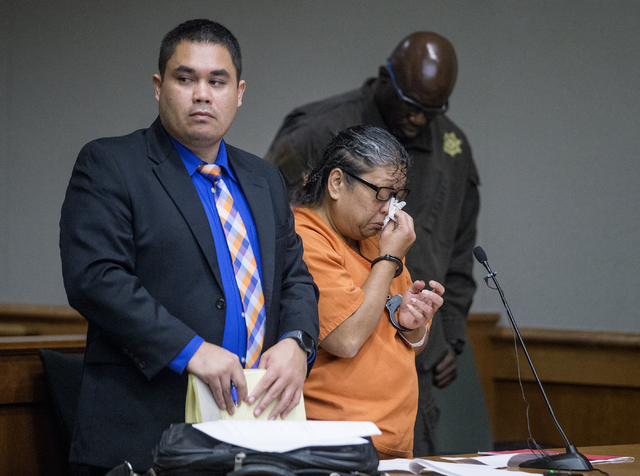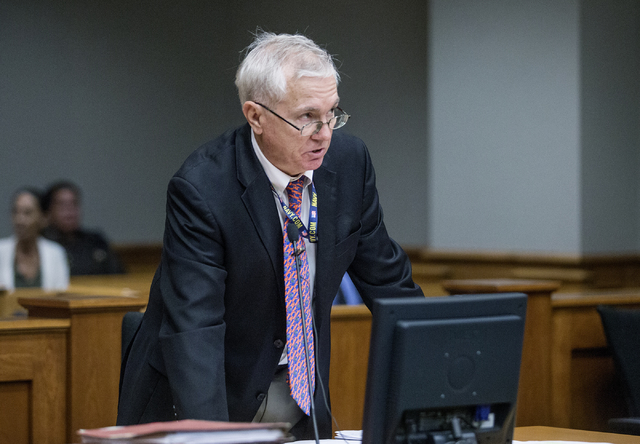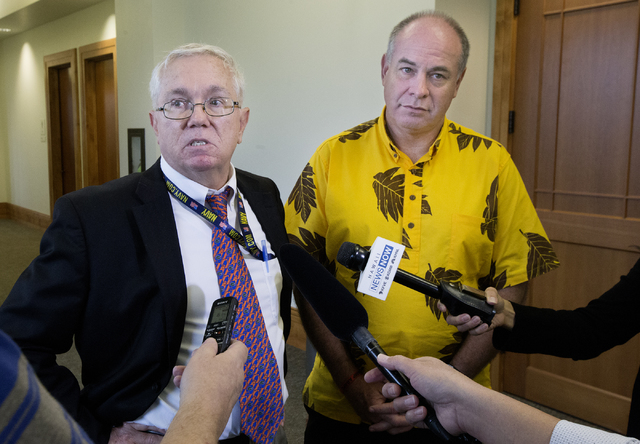‘I failed to protect my son’
“I failed to protect my son.”
ADVERTISING
With those words, a tearful Jaylin Kema pleaded guilty to manslaughter Thursday morning in the death of her 6-year-old son, Peter Kema Jr.
Her son, known as “Peter Boy,” went missing in 1997. His body has not been found.
Hilo Circuit Judge Glenn Hara asked Kema if her actions “recklessly caused the death” of Peter Boy.
“Yes,” she replied.
The case is the most notorious missing child-turned-murder investigation in the state’s history, and Peter Boy became the statewide poster child for abused and missing children.
Peter Kema Sr., the boy’s father, still faces a second-degree murder charge in his son’s death. His trial is scheduled to start Jan. 23 before Hilo Circuit Judge Greg Nakamura, but Deputy Prosecutor Rick Damerville told Hara his trial likely will be postponed until April to allow Kema Sr.’s defense lawyers to prepare their case, given his wife’s manslaughter plea and her agreement to testify against him at trial.
The judge said that in return for Jaylin Kema’s plea, the state has agreed to sentence her to 10 years probation with one year in jail, with sentencing to take place after her husband’s trial.
A sentencing date of May 30 was set, but if she is not sentenced by April 27, she will be freed on supervised release with electronic monitoring and will give a videotaped pretrial deposition, if needed. That date will mark a year of incarceration. She and Kema Sr. were arrested April 28, 2016, after being indicted by a Hilo grand jury for murder.
Jaylin Kema, who also pleaded guilty to second-degree theft for unlawfully receiving more than $18,000 in food stamps, faces a possible 20 years on the manslaughter charge and five years on the theft charge if she fails to live up to her end of the plea deal.
Damerville became emotional as he told the judge a forensic pathologist will testify Peter Boy probably died from septic shock due to an infected and festering wound on his arm caused by abuse from Kema Sr., and because his parents failed to provide the boy timely medical attention.
According to Damerville, Peter Boy’s siblings said Jaylin Kema cleaned the wound with hydrogen peroxide and iodine, and gave the boy medicine in his milk.
“We don’t know exactly what kind of medicine was being given to him. It was probably some form of antibiotic,” Damerville said. “But for many antibiotics, delivering it in milk product would likely interfere with the effectiveness of the antibiotic.”
He said that in April 1997, a teenage girl who was herself the victim of abuse reported to her Child Protective Services worker that Peter Boy’s condition “was so bad that she was afraid that he was going to die.”
Damerville said, according to Peter Boy’s siblings, the boy “had a hole in his arm the size of a quarter that was so deep you could put your finger in it.”
“There was constant pus …,” he said. “The arm was swollen and red to the point that he could not effectively use his arm and the fingers.”
He added in May or June 1997, Peter Boy’s younger sister, then 4, “saw Jaylin calling out for her husband and saw Jaylin trying to administer what most would say was CPR” to the boy, and that later the same day, the girl saw Peter Boy “dead in a box.”
Damerville said the family had medical insurance coverage, but Jaylin Kema, who “as a parent had a duty and opportunity to safely obtain medical treatment” for the boy didn’t do so “in part … because she was a chronically abused spouse, but the circumstances were such that she had many opportunities to report the abuse of herself and her children and did not do so.”
According to 2,000-plus pages of documents released in 2005 by then-Department of Human Services Director Lillian Koller, Peter Boy’s litany of abuse started Aug. 11, 1991.
The boy, then 3 months old, was admitted to Hilo Hospital, where X-rays showed multiple new and healing fractures to a shoulder, elbow, ribs and knee. All the children were removed from the Kemas, with Peter Boy’s older half-sister and half-brother placed with Jaylin Kema’s parents in Kona and Peter Boy being shuttled between a foster home and his maternal grandparents.
The toddler was returned to the Kemas in July 1994 despite multiple warnings from several quarters that his parents were unfit. His older siblings were returned 11 months later.
Peter Boy was last seen about the time of the CPS report in 1997 by the teenager, identified in documents as a cousin. Jaylin Kema didn’t officially report his disappearance until January 1998 after prompting by a social worker and police.
Peter Kema Sr. told authorities in August 1997 he left Peter Boy with a longtime family friend, “Aunty Rose Makuakane,” at Aala Park in downtown Honolulu. Police found no evidence the woman existed, didn’t believe Kema and found no plane tickets to corroborate his account.
Jaylin Kema didn’t reveal in court what happened to her son’s body.
After the hearing, Damerville told reporters that prosecutors are “ready to go forward” with their case against Kema Sr. — with or without his wife’s testimony.
“I was happy with my case if she did not cooperate. I’m more happy with my case now that she is cooperating,” he said.
Damerville said cases involving child victims are emotional for him “because you look at the facts, and you go, ‘This didn’t have to happen.’”
“It also affects all the police officers and all the investigators, because the case is on their mind,” he said. “It doesn’t go away, when children are involved. It didn’t go away for the entire community. … You can still see the bumper stickers: ‘Where’s Peter Boy?’”
Added County Prosecutor Mitch Roth, who was in the courtroom gallery, “We’re still not done with our job, so we’re going to keep on working.”
Email John Burnett at jburnett@hawaiitribune-herald.com.





